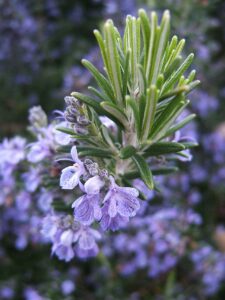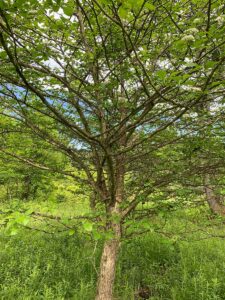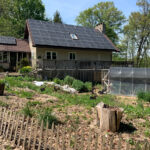As we’ve been exploring on this blog, for many of us, life is more than a bit overwhelming right now. Many of us are feeling beyond capacity from multiple angles: the breakdown of the social fabric and increasing social and political challenges, war on multiple fronts, environmental crisis, increased work demands, health challenges, finances, and hyperinflation–you name it. I’ve been sharing some perspectives here on the Druid’s Garden recently in my posts about straddling the edge and straddling the edge post II, where many of us have shared how difficult it is right now to find balance. One of the challenges I’m hearing about from a lot of people is that the amount of things there seem to be to do right now is overwhelming. What happens when things get like that is that some of us get into an “ok, done” and check things off a list pattern. Accomplishments that might normally bring you joy are now in this pattern of “ok, done. next. Done, next. Done, next”. There is so much to do that there is no time for reflection, a natural pause, or celebration before the next thing must be attended to. So, let’s all take a breath today.
Thankfully, for those of us in the northern hemisphere, the land is slowing down around us, so this is a good season to carve out some time for reflection and learn to slow down–now more than ever before. When times get tough, I have found that digging even deeper into my spiritual practices is a way of creating balance and sanity. So today, in line with my longer theme on exploring gratitude and days of giving thanks, I want to present another possible gratitude approach: exploring lessons learned, including meditations and practices surrounding this approach. Before that, let’s delve into the reasons that gratitude is such a good practice to embrace.
Gratitude, Health, and Mental Health

Let’s start with some of the research on gratitude, as this helps illustrate some of the importance of things I’m going to share today. In a nutshell, gratitude is an awesome practice that supports our well-functioning both mentally and physically (and spiritually, which you aren’t going to find discussed in the psychological literature!)
Gratitude is considered to be both a state of being that we can inhabit as well as a personal trait that we can express. As Jans-Berken et. al. (2020) describe in a large review of literature in the Journal of Positive Psychology when gratitude is a state of being, it is tied to how we attribute positive outcomes in our lives to things that happen–we are grateful for something and that gratitude helps us be happier and healthier people. If we do this practice enough, gratitude becomes a general life orientation where we frequently notice and be grateful for the good things in our lives and the broader world. Both of these are associated with long-term health and mental health benefits.
A range of research overviewed by Jans-Berken and colleagues demonstrates that gratitude is tied with many positive outcomes, from physical health benefits including better sleep, less bodily pain, holding less stress in the body, recovering more quickly, and better cardiovascular health. Mentally and psychologically, gratitude practices can reduce depression, anxiety, and stress; reduce negative emotions; and allow us to have better psychological well-being and find more meaning in life. This includes having more perceived autonomy, hope, resilience, humility, optimism, self-esteem, humility–and key for today–having more growth after experiencing trauma.
What isn’t present in this literature but what is also worth saying is that gratitude also forms many foundations of religious and spiritual practices–making offerings, sacrifices, prayers, and other thanks. When we express gratitude, we are strengthening connections between ourselves and the physical and spiritual world around us–and connection is one of the core practices in nature spirituality. When we express gratitude and make offerings of thanks to the land, many religious traditions recognize that that energy literally nourishes the land. There are so many spiritual reasons to build gratitude into your spiritual practice.
In sum, gratitude is a lot more than just a fun or nice thing we do rather, is tied to a range of well-being and well-functioning for us. Taking stock of what we have learned and how we have grown is an important part of our self-development and as we just explored, can have us staying healthy and happy.
Lessons Learned as a Gratitude Framework for Difficult Times

Alright, so with that said, what about having gratitude in difficult times? What about when we are facing trauma, challenges, exhaustion, or other issues? Today’s gratitude practice focuses on the lessons we’ve learned and how to use gratitude to transform trauma and challenges into something more positive and enriching. It is useful to think about the lessons we’ve learned in a year as part of an ongoing gratitude practice. How do we grow as people?
Why were lessons learned? Considering gratitude for lessons learned allows us to focus our meditations and thinking in three powerful directions: recognizing our growth as people, recognizing what we have overcome, and of course, having gratitude for those events.
How do you recognize lessons learned? I find that this can be done both as an individual or in a group setting, but it has real power in a group setting. Individually, you might consider using discursive meditation or another meditation technique (walking a labyrinth, walking meditation) to explore the lessons in the last year. You might also use sacred journaling to write through these lessons or even read through your journals from the last season/year/period to see what you have learned.
In a group, this can be done over dinner, around a fire with friends, etc. It can be more formal or ritualized (e.g. creating a sacred space, sharing, sending good work into the future) or it can be done in a much less formal way.
You might explore it in both ways to see what different results you get.
Timing of exploring lessons learned:
You can choose a period of time to explore and do this work at a particular point in the year (like right now!). This time frame could be in the last year, last season, light half of the year, and so on. Or you can use it when you have a clear transition happening in your life–where something is ending and something is beginning (e.g. you have suffered a loss, you are moving, taking a new job, celebrating a new union, etc).
You can do this at any point, but you might tie it to Samhain (which many pagans and druids aligning with Celtic traditions recognize as the new year), with Thanksgiving practices (which vary by timing, but which are practiced by many in North America), or with the mundane new year, coming up on January 1st. I’m timing this post to be aligned with the Thanksgiving holiday here in the United States, as I always like to do something like this during this time of year.
Core Lessons Learned that Shape Who You are
Another Areader-scale approach to this is to explore the core lessons of who we are as people. This can be a review of the most important lessons in our lives as a whole or in a certain longer period of time. This is always good to do every few years–and a good marker for this could be to do it on your birthday or another meaningful day to you.
Deepening Lessons Learned as Tied to Trauma or Stress
 Now, let’s consider this framework in line with stress, trauma, and other difficult times. When we are expressing gratitude, it is put in a framework of either: I’m so grateful for the good things I have or I’m so grateful that things aren’t worse. But some of the most difficult things in our life often offer important lessons–and why we aren’t necessarily grateful or happy about the experience, one way of framing these in a gratitude-oriented way can be tied to lessons we learn.
Now, let’s consider this framework in line with stress, trauma, and other difficult times. When we are expressing gratitude, it is put in a framework of either: I’m so grateful for the good things I have or I’m so grateful that things aren’t worse. But some of the most difficult things in our life often offer important lessons–and why we aren’t necessarily grateful or happy about the experience, one way of framing these in a gratitude-oriented way can be tied to lessons we learn.
Using a lessons-learned framework can be very useful for seeing the good in past trauma and processing that trauma or severe difficulty. I’ll give two examples here: one every day and one more extreme.
On the everyday side, perhaps I have a very full day with a lot to do. I don’t even really get to catch my breath and soon, 12 hours have gone by and I’ve done nothing but work. But rather than feeling unhappy at how this unavoidable day went, I can think about the lessons I learned and the interactions I had, and still be in a place of gratitude. Perhaps today I mastered something that I had been working towards for a long time, or one of my students had a major success.
On the more extreme side, a major traumatic event in my life was having someone very dear to me sicken and die of a terminal brain tumor when I was in my early to mid 20s. It was tragic–watching him fight to stay alive, feeling powerless to do nothing but stand by his side, being so angry that someone so good and so young was experiencing this. When he passed, it destroyed me for a long time, but eventually, I found my way out of it–by taking up druidry as a spiritual path, by taking up the bardic arts as a healing process, and by recognizing all that he taught me. This transformation did not happen overnight, but it did happen and because of it, I am the person I am today. There is no way to say “I’m grateful that this happened” because I’m not. It was an awful experience and someone so young and with so much potential and life should never have died the way he did. But if I focus on that energy, I only focus on the negative. I focus on the loss, the pain, the grief. If, instead, I focus on the lessons I learned–identifying them, speaking them, and being grateful for them, I shift the narrative. I can say I am grateful to have had him in my life, to see what he taught me through both living and passing, and I’m grateful for my past self’s bravery in transforming this experience into something that shaped me into the person I am today. Thus, rather than focusing on this terrible event that I can’t change, I place my emphasis on gratitude for the lessons learned from the event. That re-orientation is a powerful, magical practice of transformation.
When you feel ready, you might use this approach for your healing and growth. Think about reflecting both on the small difficulties and the larger traumas, exploring the lessons learned. Expressing gratitude for those lessons can help you better integrate these traumas into your life, and just as importantly, allow you to see the good in otherwise difficult circumstances.
This same approach can, of course, be applied to the here and now–in the ongoing challenges we are facing, it can be an outstanding tool to take a pause and recognize how far we’ve come.
Herbal Supports for this Work

In addition to the techniques above, you might want to explore herbal supports for this work–these herbal allies can support and nurture you as you do this deep work of the self.
Rosemary (Salvia rosmarinus): Rosemary is an herb tied to a wide range of healing, but for our purposes today, she is also explicitly tied to remembrance. She allows us to gently and carefully go into our memories and see the good. Thus, she is a wonderful herb to work with–in a tea, in a meal, burning as an incense, used in a bath, or just taking a nibble. Even just sitting with a rosemary plant for this work can be quite useful.
Calamus (Acorus calamus): A plant focusing on our throat and our voice, Calamus is particularly good for bringing us voice and bringing out the lessons, especially among trauma. Use fresh or dried, in teas, baths, salves, and more.
Hawthorn (Crataegus spp.): A wonderful plant ally that allows us to open our hearts for healing and growth. Use in the same ways as above.
Conclusion
I hope this post has offered new tools for navigating difficult times. I’m happy, as always, to be with you on this journey. I’d love to hear more about how you use gratitude practices generally, and how you might use or already use this framework in your life. Blessings!




Thank you, Dana. A beautiful offering for challenging times. I love how, in the end, you provide a lovely ritual – baking bread imbued with the empowering essence of plants and trees.
Hi Carin, thank you :). Blessings to you!
Dana, this is so thoughtful and so helpful. When we were small children our mother would sit on the side of our bed at night and ask us to reflect on our day and she would ask three questions. What were we sorry for? What were we grateful for? And what brought us joy that day. My mother was always grateful for something and her life was not easy, but she lived to be 97. I just turned 70 a few weeks ago and being grateful for basically everything is probably the biggest lesson I have learned. I admit sometimes I want to shake my own children and tell them, Be grateful!! Thank God for all of it!! Thank the universe for being there for you!! But they will learn.
Hello Heather, I love this! Thank you for sharing this–what a beautiful bedtime ritual for you to continue. Blessings to you!
Thank you, Dana! What a great way to start my morning. I struggle with making my practice a series of things on a to do list. Which makes it just another job in a long list of things that never seem to get done. A well timed reminder for me to enjoy my practice and have gratitude For the peace it can bring to my life and the world around us.
Hello Tom, great, I’m so glad this was helpful to you! Making all those to do lists is more than a bit exhausting, huh? I am not sure when I shifted from finding pleasure in crossing things off to just being overwhelmed with everything, but I am happy to have shifted in this direction.